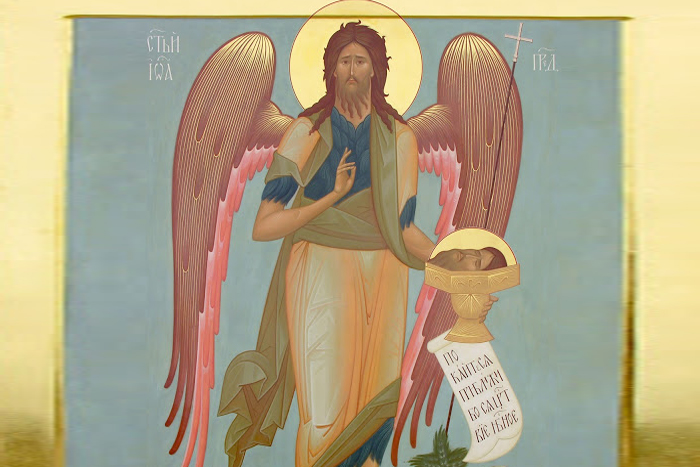
The traditions and teaching of the Christian Church often appear to change and evolve over time. It does not mean that the teaching itself changes, but that each generation brings new ways to express their faith, which is itself eternal and unchanging. The icon of the Mother of God “Unburnt Bush” is a great example of this. Indeed, the Icon in its current form weaves together numerous ancient teachings of the Church – on the Mother of God, the Incarnation, Old Testament Prophecies and Angelology – into a single composition. Peeling the layers of this Icon are both rewarding and illuminating…
The name of the Icon “Burning bush” (sometimes “Unburnt bush”) derives from the miracle, witnessed by Moses on the Mount Horeb. In the Book of Exodus it is stated: whilst Moses was tending the flock, he witnessed a bush burning with fire, but unharmed at the same time. God called out to Moses from the flame, ordering him to remove his sandals “for the place where you stand is holy ground” (Exodus, 3:1-6). Moses was then called by God to lead the Israelites out of Egypt.
The Church established by Christ has always looked back on this event and seen the “Unburnt Bush” on the Mount Horeb as a type – a prefiguration – of the Holy Theotokos, who gave birth to Christ while still remaining a virgin (burning with fire yet unconsumed).
Symbolism in the Unburnt Bush Icon

The icon of the Mother of God “the Unburnt Bush” has developed so that most examples of the Icon have a rich and intricate symbolism.
The burning bush itself is represented by the two diamonds – one flame-red, one leaf-green – arranged as an eight pointed star in the midst of which the Mother of God and Christ are sitting. The number of eight is well established in the Bible as a number symbolizing eternity. In between the eight points there are eight “petals” within which stand eight archangels – the highest ranking of the Heavenly Powers. The green diamond is decorated with more angels – seraphim and cherubim – and is often colored slightly darker, almost blue, and is arrayed with stars to suggest the heavens.
Green or blue can both symbolize “creation” as opposed to the divine, so the twin use of the blue to represent the bush and the Heavens is appropriate. The “divine” flame red diamond is almost always decorated with the angelic tetramorph representing the four Evangelists (and in the above icon the names of the four Gospel writers appear).
Around the border of the Icon more prefigurations and prophecies of the Incarnation of the Son of God are arranged. Different icons will contain different numbers of scenes, but the four most common scenes, shown clockwise from the top-right of the above icon, are:
A seraphim feeding a hot coal to the Prophet Isaiah. Though burning with fire, the hot coal cleansed the lips of the prophet just as Christ inside of the Virgin cleansed her.

Jacob’s dream of the ladder in which angels were seen dancing up and down a ladder which stretched from the earth up to Heaven. The ladder is associated with the Mother of God, through whom the glory of God descended from Heaven to earth and was incarnate as Jesus Christ.

Ezekiel’s vision of the temple gate through which the Lord passed and was ever-after sealed. This has always been recognized by Christians as a clear reference to Mary’s ever-virginity.

Finally in the top-left corner is Moses removing his sandals before the burning bush, the revelatory incident upon which the whole icon is based.

Not present on all Icons, but seen in the bottom centre of the icon above is a form of the “Tree of Jesse”.
At the center of all this, surrounded by the angelic powers, are the Mother of God and her Son, Jesus Christ. Besides Christ, our Lady may also hold “Jacob’s Ladder”, or any other symbol of the Gates of the Heavenly Kingdom. All of these Old Testament symbols point us towards the Mother of God, covered with a garment of Divine Fire, who in turn points us towards the birth or her Son, Our Savior.






Thanks for your explanation and beautiful photo’s, my husband is an iconpainter since 1996 and painted this icon also…